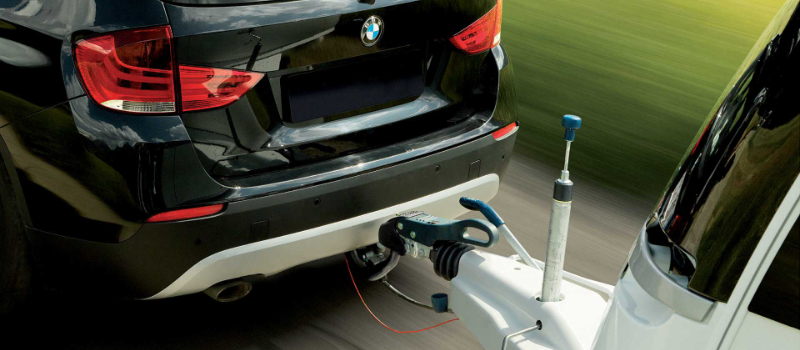Towing requires not only a vehicle with a towbar but also the proper securing of the load. It is important to consider the weight of the trailer and its compatibility with the vehicle’s capabilities to avoid overloading and reduced maneuverability. Driving with a trailer may require practice, especially for those doing it for the first time. Even if you do not own a trailer, it is easy and affordable to rent one. Many companies offer rental services, and some hardware stores even provide trailers for free when purchasing bulky goods.
Choosing a Towbar
If your vehicle does not come with a factory-installed towbar, you can have one installed afterward. Steinhof towbars are available in two options: fixed and detachable.
- Fixed Towbar – A reliable and budget-friendly option. It is ideal for those who frequently use a trailer and does not require maintenance.
- Detachable Towbar – A convenient solution for those who use a trailer occasionally. When the towbar is not needed, it can be easily removed.
Choosing the Right Connection
When installing a towbar, the question arises: should you choose a 7-pin or a 13-pin connector? Older trailers use a 7-pin connection, while modern trailers come with a 13-pin connector. If you are unsure which one to choose, the 13-pin option is more versatile, as an adapter allows it to work with a 7-pin trailer. Such an adapter costs around 10 euros and is available in our store.
Trailer Equipment – What is Needed?
For safe towing, it is crucial to secure the load properly to prevent it from falling off and creating hazards for other road users. All items must be fastened using sturdy straps or ropes. If transporting loose materials (such as sand or leaves), use a tarp or net.
Check the reliability of the trailer’s connection to the vehicle. If the hitch mechanism is rusty or damaged, it should be replaced. It is also recommended to install a towbar lock to prevent trailer theft.
Many trailers are equipped with a jockey wheel, which makes it easier to move them when detached from the vehicle. Do not forget to raise it before driving!
How to Load a Trailer Properly?
Proper weight distribution plays a key role in road safety. The load must be secured to prevent shifting during transport. Use anchor points and durable straps.
It is important to distribute the load evenly to avoid overloading either the front or rear of the trailer. Ideally, around 60% of the load should be placed in front of the trailer axle, with the remaining 40% behind. This helps maintain stability and improves vehicle handling. An improperly balanced load can make the vehicle difficult to control and lead to dangerous situations.
Additionally, always check the maximum permissible trailer weight specified in the vehicle’s documents and avoid exceeding it. An overloaded trailer can negatively affect braking and maneuverability.
Important Checks Before Towing a Trailer:
- Check the vehicle’s registration certificate to see what type of trailer it can tow.
- Ensure that your driver’s license allows you to tow a trailer of the required weight.
- Inspect the trailer tires and check the tire pressure.
- Connect the trailer to the vehicle’s electrical system and ensure that all lights work: parking lights, brake lights, turn signals, and fog lights (if applicable).
- Raise the jockey wheel and secure the safety chain if present.
- Verify that the trailer is securely attached to the towbar.
- Adjust the vehicle’s mirrors to ensure a clear view of the trailer and surrounding traffic.
- Load the trailer so that the center of gravity remains low and balanced.
- Secure the load with straps to prevent it from shifting while driving.
- Drive smoothly and avoid sudden movements, as they can cause trailer sway and reduce stability.
Following these rules will ensure safety on the road and a comfortable towing experience.

